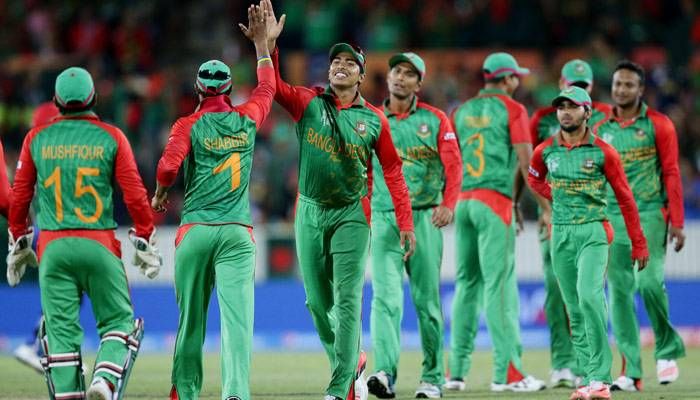
Exploring Bangladesh's recent success

Bangladesh cricket has never been in as much spotlight as it is currently and there is a lot of merit to their being the talk of the town. The recent series victory against India on the back of a whitewash of Pakistan at home, with the addition of a World Cup quarter-final appearance, means they must have done quite a few things right.
If anybody wants to call Bangladesh a minnow again, you better ask if the sport in question is cricket. The time has indeed come for all of us to acknowledge India’s eastern neighbours as a strong competitor, at least in the shorter formats of the game. But, as they say, to achieve is one thing, to keep achieving over and over again takes something else.
The question to be asked is that do Bangladesh have the arsenal to extend this wonderful form into such a streak that people start associating the word ‘class’ rather than ’form’ to their cricket.
Quality in pace and spin
With 300+ scores becoming as frequent as traffic jams in Mumbai, the necessity to pick 10 wickets in one-day cricket has increased over the years. For a team to win an ODI match, taking 10 wickets is now important more than it ever was. And unlike Bangladesh teams of the past, this side has a very potent pace attack unit.
Gone are the days when they had two 120kph seamers and a handful of spinners to try and apply the squeeze. The only way that attack was going to succeed against good teams was if the batsmen gave them an opportunity to. Those odd occasions eventually became labelled as upsets.
What has changed now? Numbers suggest that since 2004, Bangladesh’s debutant bowlers have the best economy rate than any other team in world cricket. In Taskin Ahmed, Rubel Hossain and the new sensation Mustafizur Rahman, you have three genuine wicket taking options in the line-up. Couple it with the spin craft of someone like Shakib and the experience of Mortaza, you have five very capable bowlers asking questions of the batsmen all the time.
Since the 2000s when Mohammad Rafique was the cog of the bowling attack and other bowlers would try to complete their quota of overs, bats have improved, pitches have flattened out but the Bangladeshi bowling has grown in stature too.

Emergence of a solid batting line-up
Usually, minnows have the tendency of having one really good player in their ranks. There is a huge gulf between that player and the rest of the team in terms of pedigree. Brendan Taylor for Zimbabwe and Mohammed Ashraful for Bangladesh represented that. Where Bangladeshi cricket has risen is the fact that they have come out of this syndrome of being a team in the shadow of one player.
Bangladesh doesn’t rely on just one or two batsmen anymore to get them runs. Mahmudullah, who was the fulcrum of Bangaldesh’s WC campaign with consecutive hundreds against England and New Zealand, was not even a part of the team which recently beat India; and Mushfiqur’s form with the bat has been on the decline for quite some time now.
Bangladesh of the past would have crumbled with two of their best batting resources not delivering. But this is the new Bangladesh. Runs still flowed from miscellaneous sources: Soumya Sarkar at the top and Sabbir Rahman at the bottom, to mention a couple. Shakib al Hasan and Tamim Iqbal complete the batting line-up, a stellar one if seen in entirety.
This is a really exciting time to be a Bangladeshi cricket fan. Who would have ever thought that someone will have an eye on a Mustafizur vs De Villiers contest, when the Ashes would be on at the same time? That is proof of the levels to which Bangladeshi one-day cricket has risen.